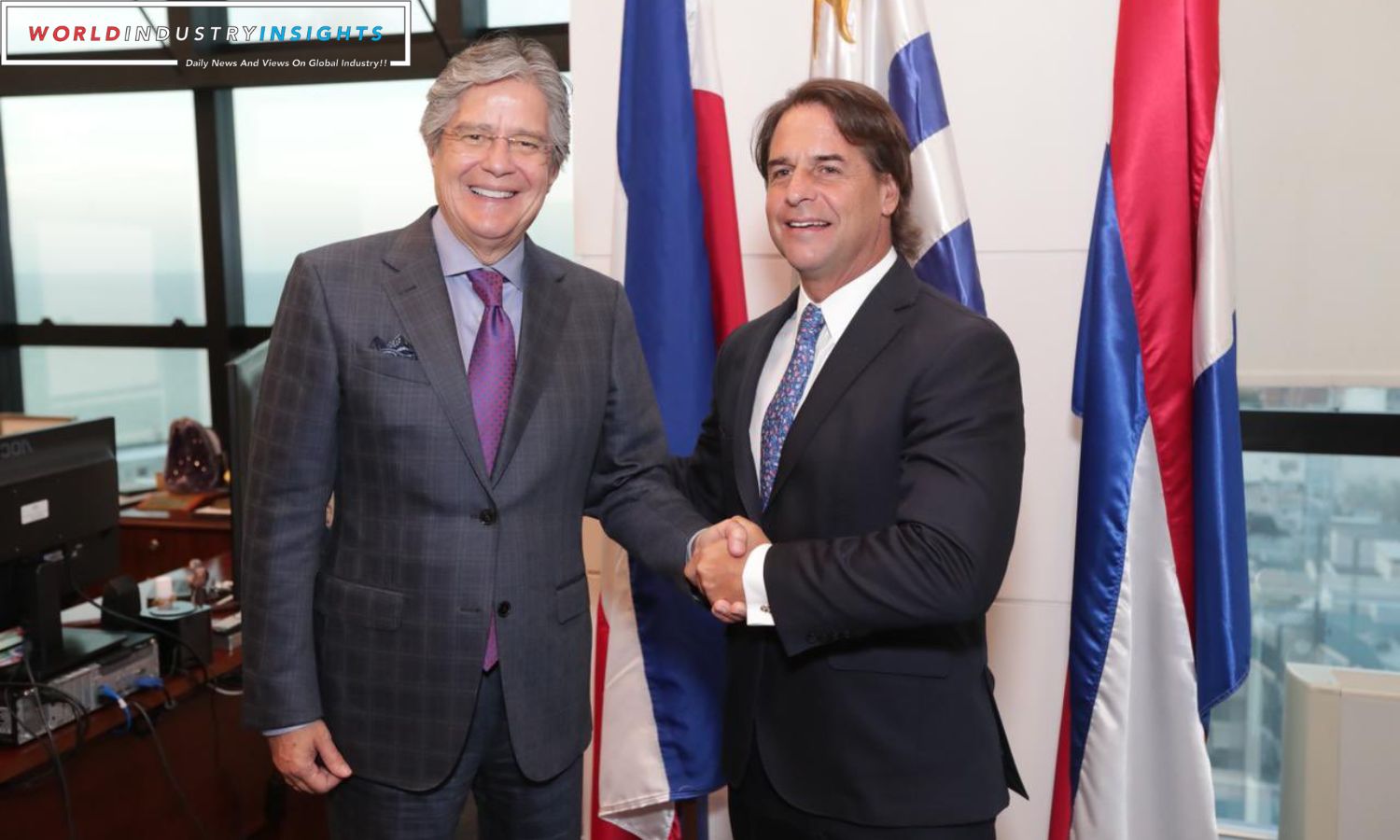Uruguay and China Forge Ahead: Uruguayan President Luis Lacalle Pou and Chinese Premier Li Qiang recently convened in Beijing, underscoring their commitment to bolstering bilateral economic ties. The leaders expressed a shared determination to advance negotiations on a comprehensive bilateral free trade agreement (FTA) and explore the potential for a broader FTA involving China and the Mercosur trade bloc. This development follows the elevation of China and Uruguay’s bilateral relationship to a “comprehensive strategic partnership” earlier in the week, aligning Montevideo’s ties with Beijing more closely with those of regional heavyweights Argentina and Brazil.
The joint statement emanating from their meeting elucidated the completion of a joint feasibility study for the proposed bilateral FTA, signaling progress in the negotiation process. Additionally, both nations expressed a keen interest in promoting FTA talks between China and Mercosur, emphasizing the strategic importance of deeper economic integration.
Uruguay, under President Lacalle Pou’s leadership, has actively pursued the idea of a bilateral FTA with China since 2021, aiming to secure trade advantages comparable to those enjoyed by other nations like Chile, Costa Rica, Ecuador, and Peru, which have successfully negotiated tariff-free access to the Chinese market.
President Lacalle Pou affirmed Uruguay’s steadfast commitment to fostering strong ties with China and actively participating in the Belt and Road Initiative (BRI). Moreover, he expressed a willingness to expedite discussions on establishing an FTA involving Uruguay, Mercosur, and China, signaling the country’s strategic intent to leverage its diplomatic and economic relationships.
However, Uruguay faces opposition from other Mercosur members, including Argentina and Brazil, who prioritize the pursuit of an FTA with Europe over individual negotiations with China. This internal discord within Mercosur has been a point of contention, with warnings issued to Uruguay about potential repercussions if it forges ahead independently with an FTA with China.
Also Read: China Ambitious Imports Drive: Premier’s Pledge to Boost Market Access
China’s interest in an FTA with Mercosur extends beyond economic considerations, as it could exert pressure on Paraguay, the lone South American country maintaining ties with Taiwan – a matter of considerable sensitivity for China, which considers Taiwan as part of its territory. An FTA with Mercosur aligns with China’s broader geopolitical and economic objectives in the region.
Uruguay, while facing challenges within the Mercosur framework, is actively seeking to diversify its economic relationships. Despite reservations from some Mercosur members, Uruguay has applied to join the Comprehensive and Progressive Agreement for Trans-Pacific Partnership (CPTPP), a significant trans-Pacific trade pact. Both Uruguay and China face political hurdles to join the CPTPP, yet their efforts underscore the evolving geopolitical landscape.
The economic dynamics between China and Uruguay have been robust, with China accounting for 27% of Uruguay’s exports in 2022. Notably, the primary export, beef, constitutes two-thirds of Uruguay’s exports to China. However, the meat industry faces a 12% tariff, making it a key point of negotiation for Uruguay in potential FTA discussions.
Uruguay’s history of engaging in trade negotiations, including its close call with an FTA with the United States in 2006, reflects the nation’s ongoing efforts to navigate complex global trade dynamics. As discussions progress with China, Uruguay finds itself at the intersection of economic opportunity and diplomatic challenges.
In conclusion, the evolving dynamics between Uruguay and China, as demonstrated by their commitment to FTA negotiations, underscore the intricate interplay of economic and geopolitical factors. The outcomes of these discussions will not only shape Uruguay’s trade landscape but also contribute to the broader geopolitical shifts occurring in the Latin American region.


